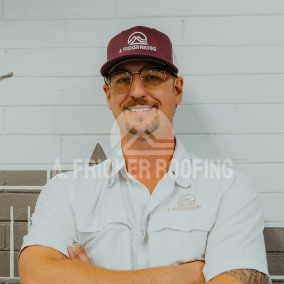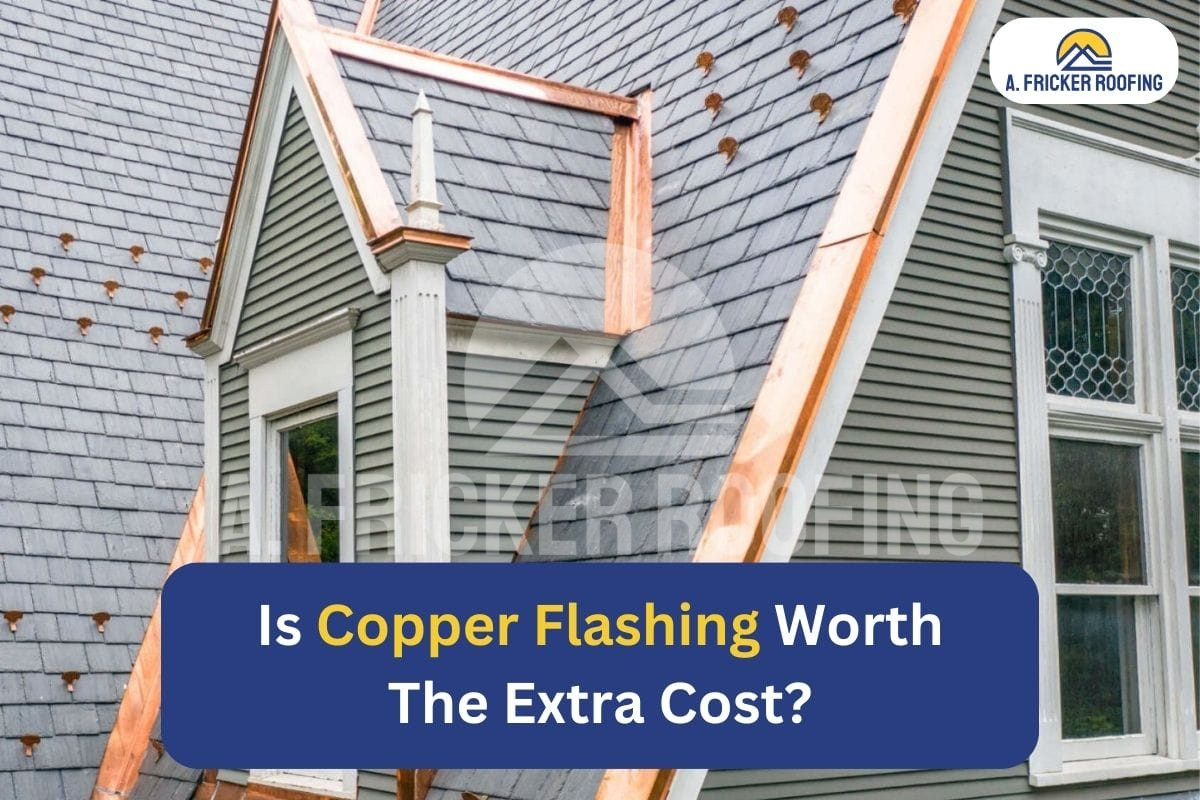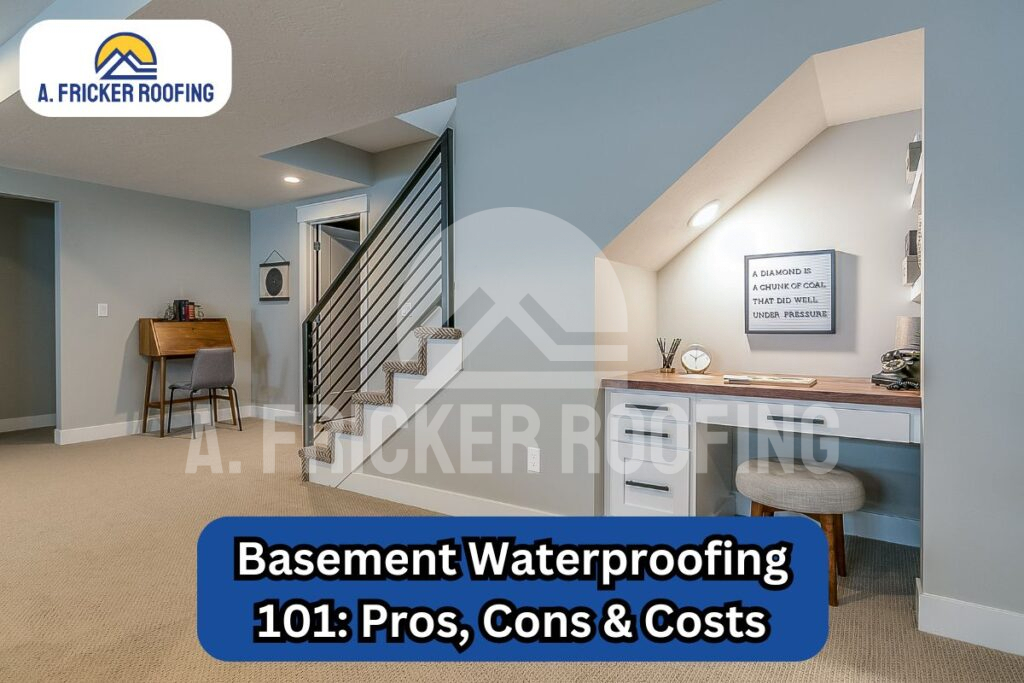
A wet basement might seem like a minor inconvenience at first, but over time, it can turn into a big headache. From water damage and mold growth to structural issues, moisture in the basement can affect your home in ways you might not even realize. That’s why basement waterproofing is essential for maintaining a dry, healthy, and stable home. In this guide, we’ll break down the importance of waterproofing, explore various methods, weigh the pros and cons, and give you an idea of what you might expect to pay.
Why Keeping Your Basement Dry is So Important
A dry basement is more than just a bonus. Moisture in your basement doesn’t just stay there—it seeps into your home’s air, increasing humidity, encouraging mold growth, and damaging your foundation. Over time, a leaky basement can weaken your home’s structural integrity and create health risks due to poor air quality.
Why Should You Care?
- Increased Humidity: Excess moisture in your basement can raise the humidity throughout your home, which puts stress on your HVAC system and increases your energy bills.
- Mold and Mildew: High humidity can lead to mold, which can trigger allergies and respiratory problems.
- Foundation Damage: Water intrusion can crack your foundation, potentially leading to costly repairs.
- Lower Home Value: A wet basement can drastically reduce your property’s marketability.
What Causes A Wet Basement?
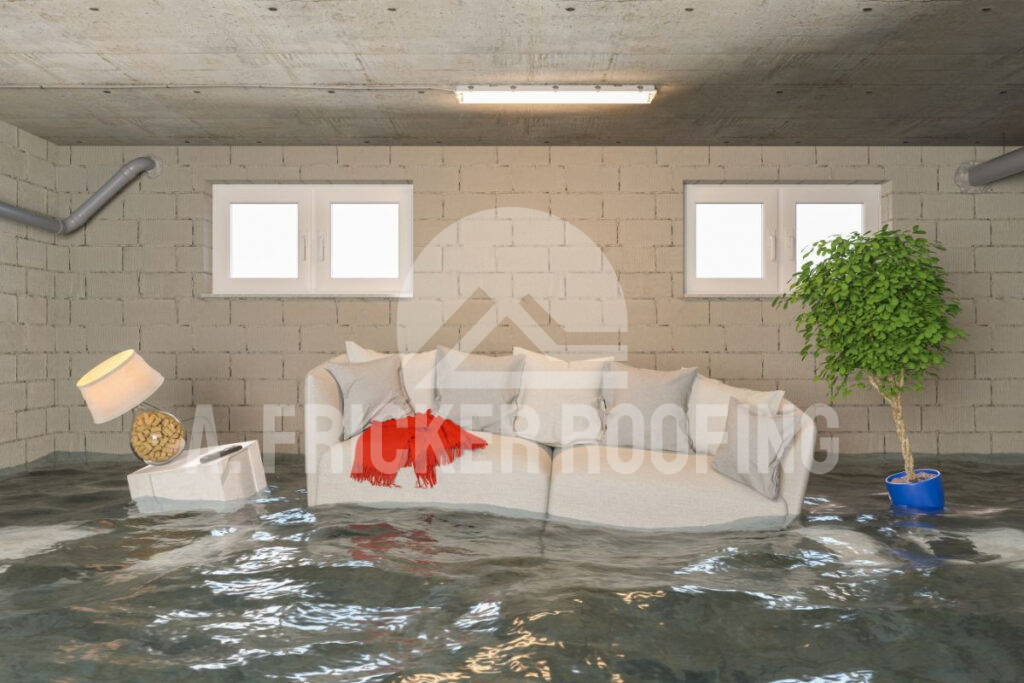
Before we talk about waterproofing, it’s important to understand why your basement might be getting wet. There are several common culprits, and addressing the root cause is key to picking the right waterproofing method.
- Poor Drainage: Homes in flood-prone areas or properties with sloping yards often experience water pooling near the foundation, leading to basement leaks. For example, homes with clogged gutters or downspouts that don’t direct water far enough from the house are at higher risk for water intrusion.
- Hydrostatic Pressure: This is especially common in older homes or those built with porous foundation materials like stone or concrete. Over time, hydrostatic pressure builds as groundwater pushes against the foundation, eventually causing leaks through even the smallest cracks.
- Cracks in Foundation: As your home settles, small cracks can form in the walls or floors of the basement. These cracks can become channels for groundwater to seep through, particularly during heavy rains or when the ground is saturated.
- Interior Condensation: Humid environments, especially in summer, can lead to condensation on basement walls and floors. This can happen in homes without proper ventilation or dehumidification.
Quick-Fix Tips
For homeowners not yet ready to commit to full waterproofing, consider these temporary solutions:
- Extend Downspouts: If water pools near your foundation, extending your downspouts to direct water further away from your home can help mitigate the problem.
- Use a Dehumidifier: If your basement is damp due to condensation or high humidity, a dehumidifier can help control moisture levels, preventing mold and mildew growth while you assess long-term options.
- Seal Cracks with Hydraulic Cement: For small, visible cracks in your foundation, applying hydraulic cement can offer a short-term fix by sealing gaps and preventing water from entering.
Interior Waterproofing Methods
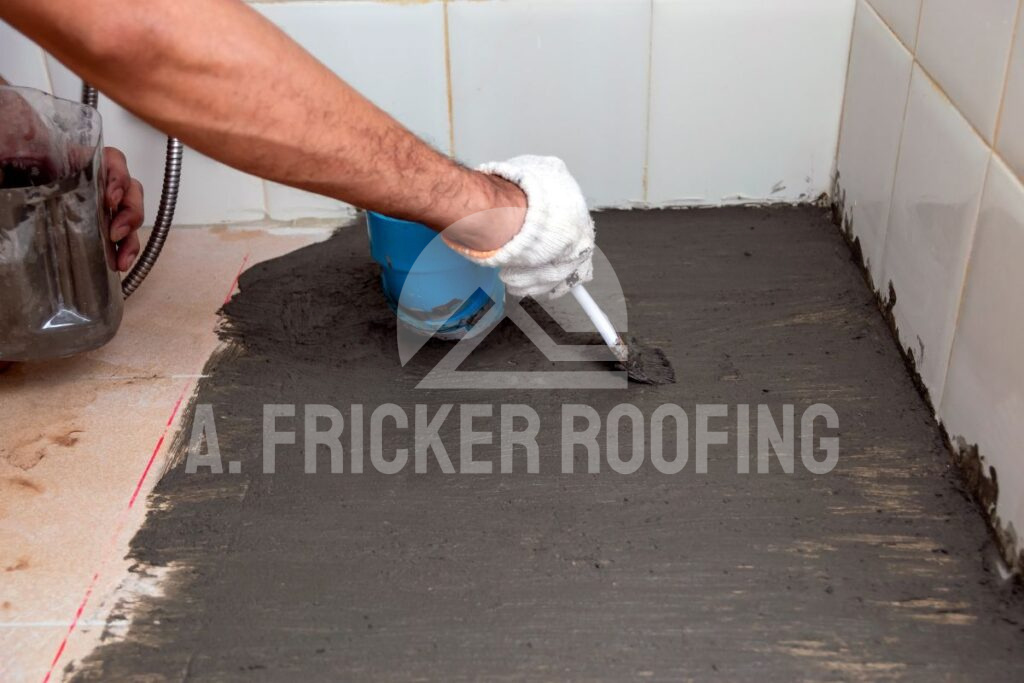
Interior waterproofing focuses on managing water inside the basement. It doesn’t stop water from entering but can keep your basement dry by redirecting water or controlling humidity. Here’s a look at some common interior waterproofing solutions:
1. Sealants and Waterproof Coatings
This is a simple first step: applying waterproof paints or sealants to the interior walls and floors. These products create a barrier that can stop minor leaks and moisture.
- Pros: Easy to apply, cost-effective, and good for minor issues.
- Cons: Not a long-term fix for serious water intrusion because it doesn’t address the root cause of the moisture.
- Best For: Small cracks and minor leaks.
- Cost: $200–$1,500, depending on the size of the area
2. Interior French Drain
A French drain is a trench filled with gravel and perforated pipe, placed along the perimeter of your basement. It collects water and directs it to a sump pump, which then removes the water from your basement.
- Pros: Great for handling significant water flow. Highly effective when paired with a sump pump.
- Cons: Requires breaking into your basement floor for installation, which can be disruptive and costly.
- Best For: Homes with moderate water problems that need water redirected.
- Cost: $2,000–$10,000
3. Sump Pumps
A sump pump is a device that pumps water out of your basement once it collects in a sump pit. This is often the last line of defense in keeping your basement dry.
- Pros: Essential for homes with high water tables or significant water intrusion. Reliable for heavy water flow.
- Cons: Requires electricity to run, and if your power goes out, the pump won’t work unless you have a backup.
- Best For: Homes prone to flooding or with high water tables.
- Cost: $1,000–$3,000
Exterior Waterproofing Methods
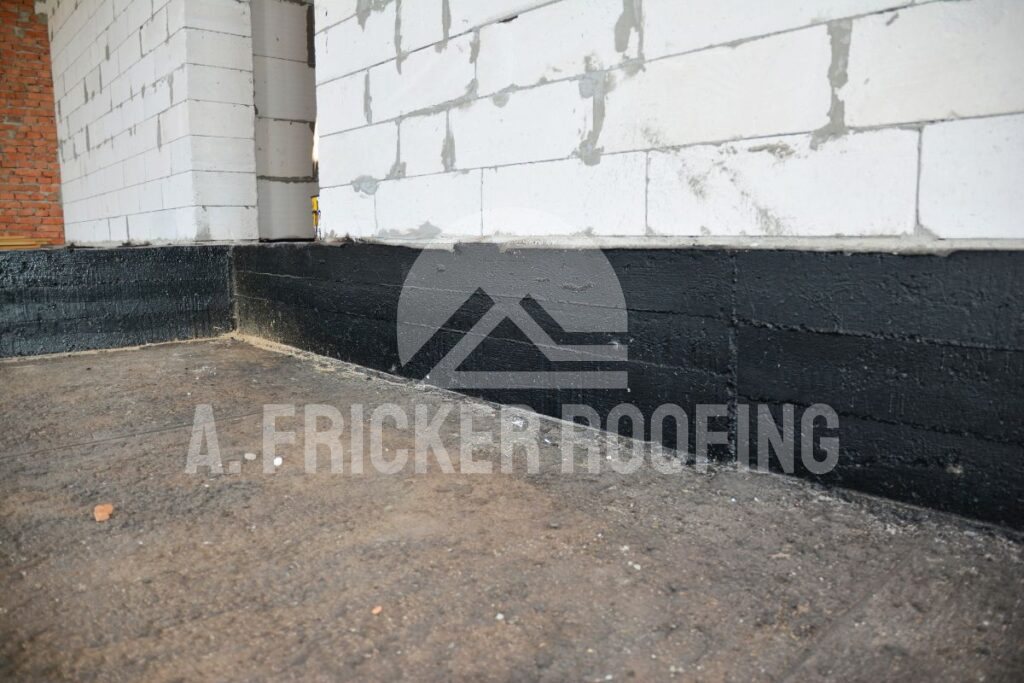
Exterior waterproofing tackles the problem at its source: preventing water from entering your basement. These solutions are more invasive but generally provide long-lasting results.
1. Exterior Membranes
Waterproof membranes can be applied to the outside of your foundation walls. These membranes create a barrier that prevents groundwater from entering your basement.
- Pros: Highly effective for stopping water before it gets inside. Offers long-term protection.
- Cons: Expensive and labor-intensive, as it requires excavation around the entire foundation.
- Best For: Homes with severe water problems or ongoing water intrusion.
- Cost: $3,000–$15,000 (due to excavation)
2. Drainage Systems (French Drains and Weeping Tiles)
Similar to the interior French drain, exterior drainage systems collect water around your foundation and direct it away from your home.
- Pros: Stops water before it enters the foundation. Great for areas with heavy rain or high water tables.
- Cons: Like exterior membranes, this system requires excavation and can disrupt landscaping.
- Best For: Homes in areas with heavy rainfall or homes on a slope.
- Cost: $5,000–$10,000
3. Proper Grading and Gutters
Sometimes the simplest solution is to ensure your gutters and downspouts are working properly. Grading the soil around your home to slope away from the foundation can also prevent water buildup.
- Pros: Inexpensive and effective for many homes. Can be a DIY project.
- Cons: May not be enough if you have significant water issues.
- Best For: Homes with minor water problems that can be managed by proper drainage.
- Cost: $500–$2,000
Pros of Basement Waterproofing
1. Increases Home Value
A dry basement adds usable square footage, whether for storage or living space, increasing your home’s marketability and resale value. Buyers often prefer homes with waterproofed basements to avoid future repairs.
2. Healthier Living Conditions
Waterproofing prevents mold, mildew, and excess humidity, reducing the risk of respiratory issues and improving indoor air quality. This is essential for creating a healthier environment, especially for homes with young children or the elderly.
3. Protects the Foundation
Waterproofing prevents water from eroding your home’s foundation, reducing the risk of cracks, shifting, and expensive structural repairs. A solid foundation means fewer problems in the long term.
4. Prevents Water Damage
Waterproofing protects valuable items stored in the basement and prevents costly water damage to furniture, electronics, and flooring, especially in finished basements.
5. Improves Energy Efficiency
A dry basement with lower humidity helps your HVAC system run more efficiently, saving on heating and cooling costs. Less moisture means less energy is needed to maintain comfortable indoor temperatures.
6. Protects Your Investment
If you’re turning your basement into a living space, waterproofing is essential for protecting your furniture and personal belongings from water damage.
Cons of Basement Waterproofing
1. High Upfront Costs
For older homes with weak or deteriorating foundations, exterior waterproofing can require more extensive excavation, potentially disturbing the original structure and driving up costs.
2. Invasive Installation
Exterior waterproofing requires digging around your foundation, which can disrupt landscaping, driveways, and patios. This method takes time and can cause temporary inconvenience in accessing your property.
3. Ongoing Maintenance
Interior systems like sump pumps and drains need regular maintenance to work effectively. If the sump pump fails or the drain clogs, you could still face water issues, requiring additional investment over time.
4. Not Always a Permanent Solution
Interior waterproofing methods may not address the root cause of water infiltration. Without exterior waterproofing, water may continue to build up outside, leading to ongoing pressure on your foundation.
5. No Universal Fix
Different homes require different waterproofing methods depending on soil conditions, climate, and foundation type. The wrong system may not fully solve your problem, requiring further adjustments or additional waterproofing.
Best Basement Waterproofing Products
When it comes to waterproofing your basement, choosing the right products can make all the difference. Here are some of the top expert-recommended basement waterproofing products that provide effective protection against moisture:
1. Drylok® Original Concrete & Masonry Waterproofer
A top choice for sealing interior walls and floors, Drylok is both affordable and easy to apply. It’s ideal for DIY projects where you need a quick yet effective interior waterproofing solution.
2. Ghostshield Lithi-Tek 9500 Concrete Sealer
Praised for its ability to seal cracks and holes, Ghostshield not only waterproofs but also densifies concrete. This product is especially useful for older basements where you want long-term protection against water seepage and to strengthen the concrete.
3. RadonSeal PLUS Concrete Sealer
If your basement is prone to moisture, RadonSeal PLUS is a great option. It goes up to four inches into concrete, blocking both water vapor and radon gas while allowing the surface to breathe.
4. Foundation Armor SX5000
Known for its long-lasting protection (up to 10 years), Foundation Armor SX5000 creates a hydrophobic barrier, making it ideal for large basements where extensive waterproofing is needed.
5. LastiSeal Brick & Masonry Sealer
An eco-friendly all-purpose sealer, LastiSeal works on a variety of surfaces, including brick and masonry. It offers up to a 15-year warranty, making it perfect for homeowners looking for a sustainable, long-term solution.
How Much Does Basement Waterproofing Cost?
The cost of basement waterproofing can vary depending on the extent of the work and the method used. Here’s a general idea:
- Interior waterproofing: $200 to $6,000. This includes things like sealants, sump pumps, and interior drainage systems.
- Exterior waterproofing: $1,000 to $15,000. This involves digging around the foundation, applying membranes, and installing exterior drains.
While exterior waterproofing is more expensive upfront, it provides more comprehensive, long-term protection. Think of it as an investment in your home’s structure and longevity.
How Long Does Basement Waterproofing Last?
Basement waterproofing systems vary in lifespan, and knowing how long they last helps gauge their value.
- Interior Sealants typically last 2 to 5 years and may require reapplication.
- Interior Drainage Systems, like French drains, can last up to 20 years with regular maintenance.
- Exterior Waterproofing methods, such as membranes, usually last over 20 years, while exterior drainage systems can last 30+ years if maintained properly.
Proper installation, quality materials, and routine upkeep are key to maximizing the lifespan of any system.
Choosing the Right Waterproofing Solution for Your Home
Choosing between interior and exterior methods depends on the severity of your water issue, your budget, and how long you plan to stay in the home.
If you’re unsure, consult with a professional. They can evaluate your basement, check for foundation damage, and help you choose the best solution for your specific needs.
Need Help with Basement Waterproofing In Tulsa, OK?
At A. Fricker Roofing and Waterproofing, we specialize in basement waterproofing services. Whether you’re dealing with minor moisture or serious flooding, our experts can guide you through the process and provide a solution that lasts.
Contact us today at (918) 402-7167 for a consultation, and let us help protect your home from moisture, mold, and future damage.
A. Yes, for smaller issues like sealing cracks or using waterproof paint, you can do it yourself. However, larger problems like major leaks or drainage issues are best left to professionals.
A. Interior waterproofing helps manage water that’s already inside, while exterior waterproofing stops water before it gets in. Exterior methods are more effective for long-term solutions but cost more.
A. Permanent waterproofing usually involves both exterior methods (like installing drainage systems and membranes) and interior solutions (like sump pumps and dehumidifiers) for full protection.
A. A sump pump removes water that collects in a sump pit in your basement, pumping it outside to keep the area dry during heavy rain or flooding.
